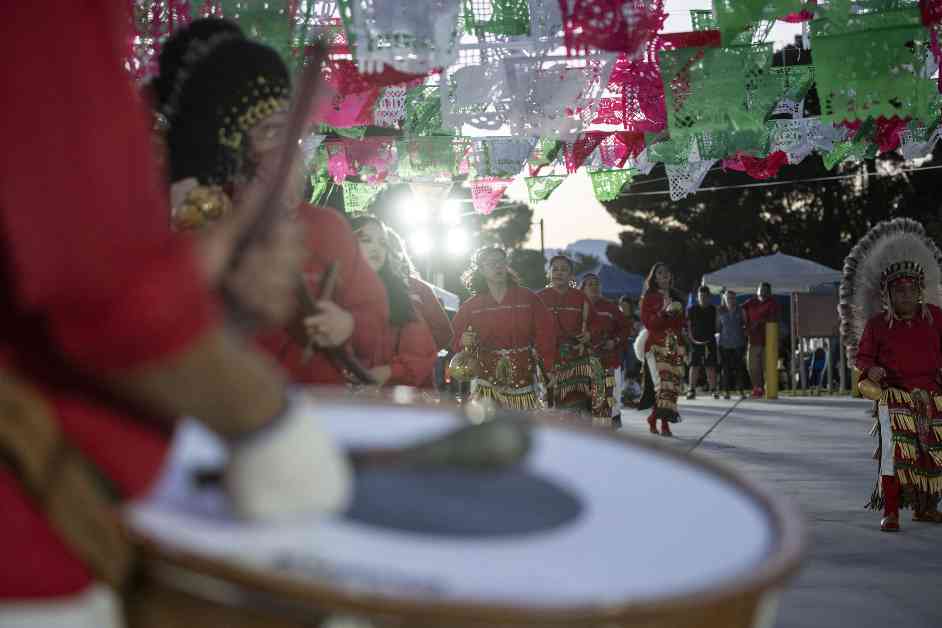Nevada’s Growing Latino Population and Political Participation
The Latino population in Nevada is on the rise, but despite the growth, political participation within the community still lags behind other demographic groups. Jose Solorio, a long-time lobbyist and community advocate in the state, highlights the challenge political campaigns face in truly engaging with the diverse Latino community. He emphasizes that the Latino vote is not monolithic, with voting behaviors varying based on factors such as immigration experience, age, and Spanish proficiency.
Solorio points out that while political parties covet the Latino vote, they often struggle to connect with this diverse group effectively. “People want the Latino vote, but they don’t know how to get it,” Solorio shared at a recent Hispanics in Politics event. “You have to reach us in different ways. We’re not just a one-size-fits-all voting bloc.”
Despite former President Donald Trump’s anti-immigrant rhetoric and Vice President Kamala Harris facing criticism over immigration issues, both have maintained steady support from Latino voters in Nevada. With Latinos making up about one in every five registered voters in the state, their potential influence in elections is significant.
The Power of Nevada Latinos in the 2024 Elections
An analysis by The Nevada Independent reveals that the voting-age Latino population in Nevada has been growing at a faster rate than the overall population, particularly in the Las Vegas Valley. This trend indicates the untapped electoral potential of Latinos in the state. While Latinos tend to register and vote at lower rates than Black and white voters, their increasing population size suggests a growing influence in Nevada’s political landscape.
The 2022 U.S. Senate race in Nevada, decided by a slim margin of about 8,000 votes, demonstrates the potential impact of Latino voters. With Nevada’s six electoral votes potentially swinging the presidential race, experts suggest that the Latino vote in the state could play a crucial role in determining the next president.
Efforts to Engage Latino Voters in Nevada
Political science professor David Damore from the University of Nevada, Las Vegas, emphasizes that courting Latino voters requires more than just TV ads. He underscores the importance of door-to-door canvassing and building trust with the community over time, a strategy that has proven successful for Democrats in Nevada. The party’s investment in engaging Latino voters has helped shift the state from lean Republican to lean Democratic over the past two decades.
Fernando Romero, the head of Hispanics in Politics, recalls the challenges faced by Nevada’s Latino community in gaining political representation. Despite the significant growth in the voting-age Latino population, their level of elected office representation has not kept pace. Efforts to secure a majority Latino congressional seat during redistricting have faced obstacles, with the voting bloc’s power diluted across the state’s districts.
Norma Salgado, a government worker, expresses optimism about the growing Latino population in Nevada. She reflects on her own experience of feeling isolated as a Hispanic student and sees the increasing numbers of Hispanic graduates as a source of pride. Salgado emphasizes the importance of lifting up other Hispanic individuals and engaging them in the political process.
Latino Voting Behaviors and Potential Impact
Despite the growth in the Latino population, data shows that Latinos in Nevada have historically registered and voted at lower rates than Black and white voters in presidential elections since 2008. While this trend suggests underrepresentation at the ballot box, there remains untapped potential among Latino voters due to their younger age and dynamic voting behaviors.
Lisa Sanchez, a political science professor at the University of Arizona, explains that Latinos tend to punch below their weight class in voter turnout compared to other racial groups. However, the younger age of eligible Latino voters in Nevada, with a median age of 37, presents an opportunity for increased political engagement. Younger voters are more likely to be energized by presidential candidates who resonate with them and use social media platforms effectively.
In the broader context of swing states, Nevada ranks third in growth of voting-age Latinos among states likely to determine the outcome of presidential elections. The surge in Latino populations in swing states like Nevada, Georgia, and North Carolina has the potential to shake up electoral dynamics, particularly in close races with razor-thin margins. Parties are increasingly focused on reaching out to Latino voters and shifting their support towards their respective camps.

